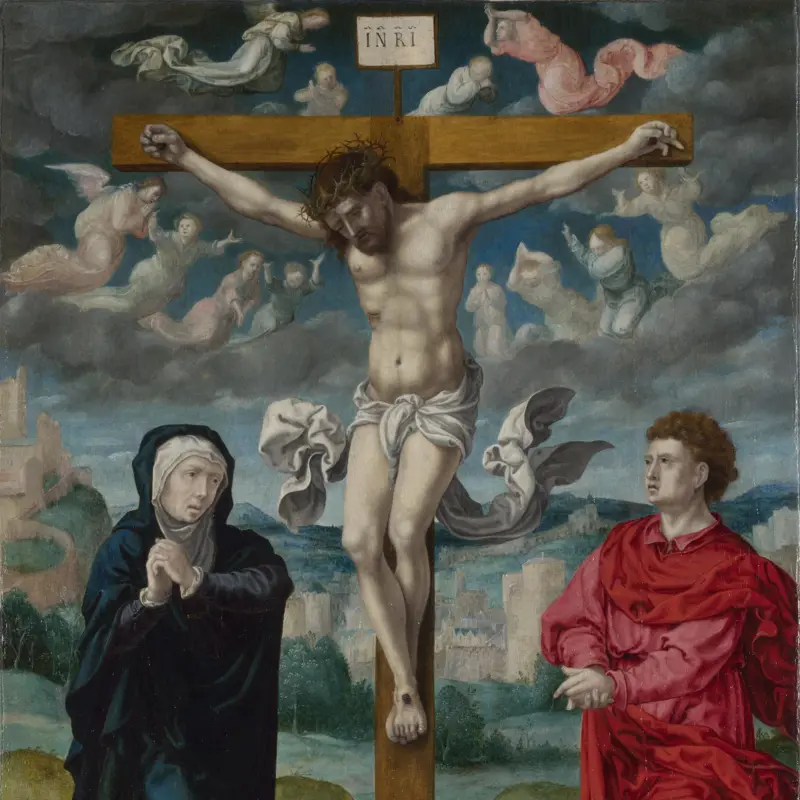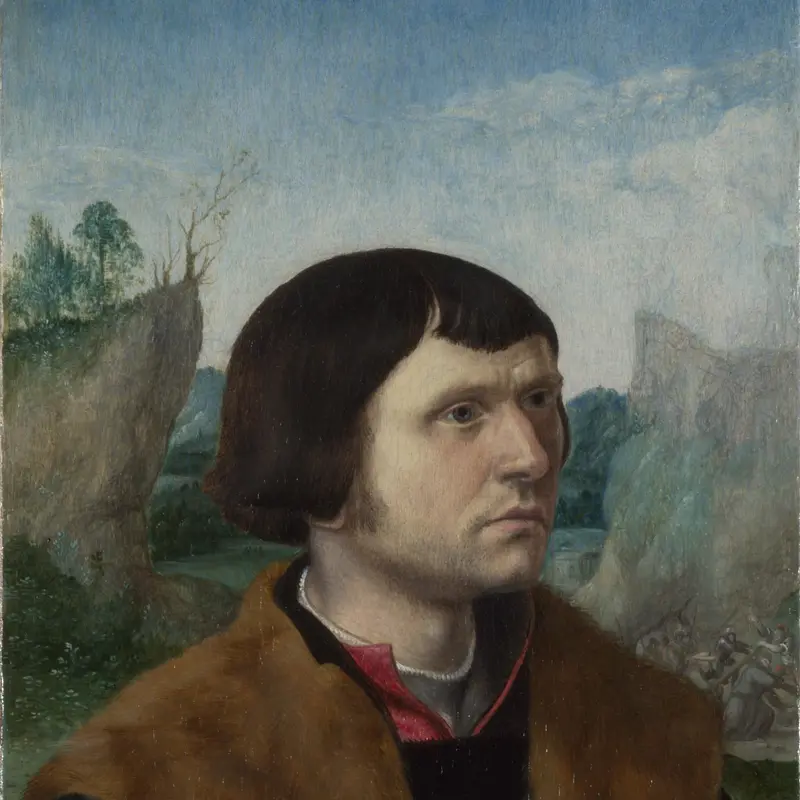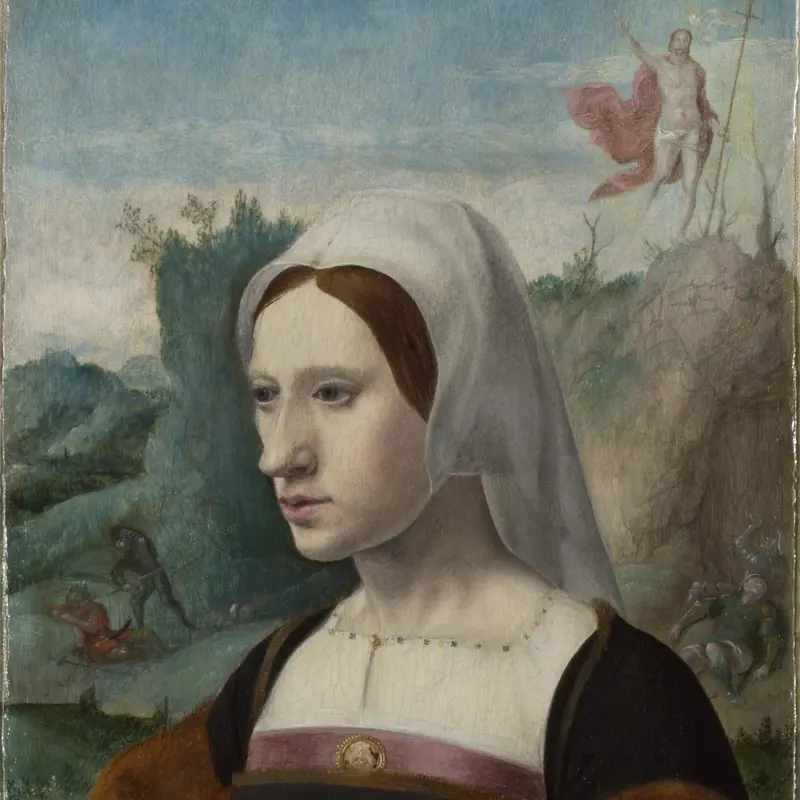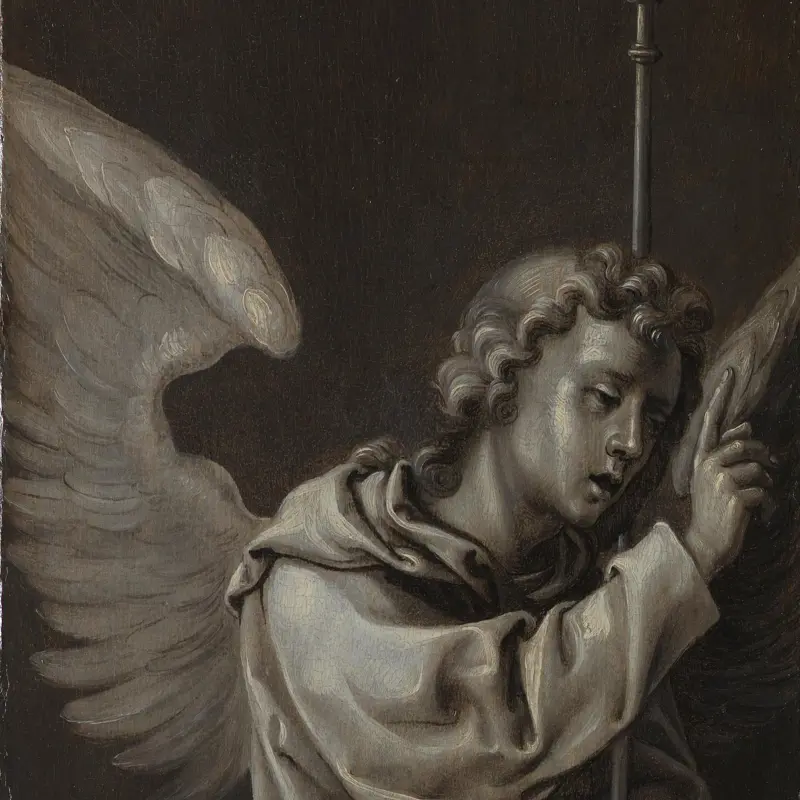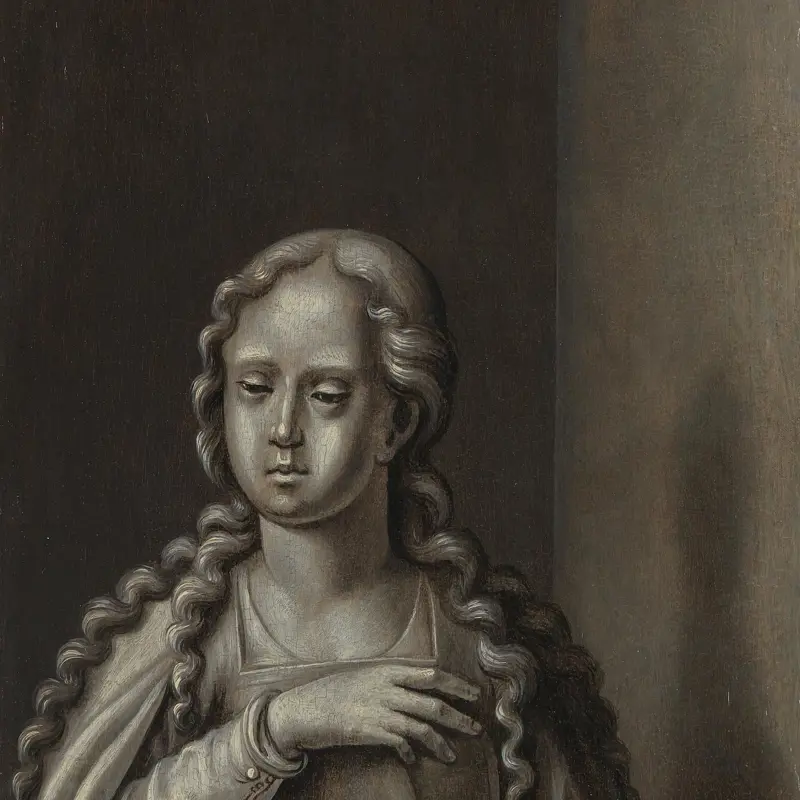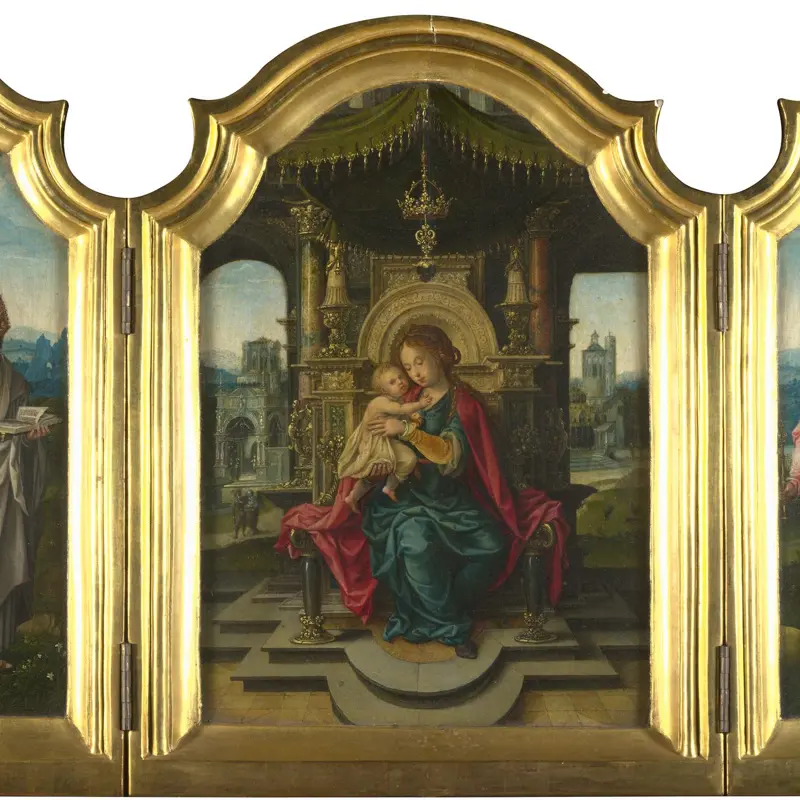Workshop of Pieter Coecke van Aalst, 'The Crucifixion: Central Panel', probably 1527-30
About the work
Overview
Christ hangs from a T-shaped cross. Sorrowing angels circle above him in a stormy sky, while the Virgin Mary and Saint John the Evangelist stand on either side, wringing their hands. The skull – seen from beneath and minus its jaw bone – is probably that of Adam, the first man, but it’s also a reference to Golgotha (‘the place of the skull’), where Christ was crucified.
This image of the Crucifixion forms the central panel of a triptych (a painting in three parts) that was probably made in the workshop of Pieter Coecke van Aalst. It was evidently a popular composition: several versions of it survive.
This panel was transferred to canvas in the nineteenth century, perhaps because one of the oak boards on which it was made had split vertically through Christ’s left wrist.
Key facts
Details
- Full title
- The Crucifixion: Central Panel
- Artist
- Workshop of Pieter Coecke van Aalst
- Artist dates
- 1502 - 1550
- Part of the series
- The Crucifixion Triptych
- Date made
- Probably 1527-30
- Medium and support
- Oil, originally on wood (probably oak), transferred to canvas
- Dimensions
- 72.2 × 49.8 cm
- Acquisition credit
- Bequeathed by Mrs Joseph H. Green, 1880
- Inventory number
- NG1088.1
- Location
- Not on display
- Collection
- Main Collection
- Previous owners
Provenance
Additional information
Text extracted from the ‘Provenance’ section of the catalogue entry in Lorne Campbell, ‘National Gallery Catalogues: The Sixteenth Century Netherlandish Paintings: With French Paintings before 1600’, London 2014; for further information, see the full catalogue entry.
Bibliography
-
1945Davies, Martin, National Gallery Catalogues: Early Netherlandish School, London 1945
-
1955Davies, Martin, National Gallery Catalogues: Early Netherlandish School, 2nd edn (revised), London 1955
-
1987Davies, Martin, National Gallery Catalogues: The Early Netherlandish School, 3rd edn, London 1987
-
2001
C. Baker and T. Henry, The National Gallery: Complete Illustrated Catalogue, London 2001
-
2014
L. Campbell, National Gallery Catalogues: The Sixteenth Century Netherlandish Paintings: With French Paintings before 1600, 2 vols, London 2014
About this record
If you know more about this work or have spotted an error, please contact us. Please note that exhibition histories are listed from 2009 onwards. Bibliographies may not be complete; more comprehensive information is available in the National Gallery Library.
Images
About the series: The Crucifixion Triptych

Overview
Two donors – husband and wife – kneel in the wings of this triptych (a painting in three parts) and gaze at the Crucifixion in the central panel. The Annunciation – the moment the Virgin Mary was told she would bear a child – was originally painted in shades of grey on the outside of the wings, but the fronts and backs are now physically separate.
The style of the painting associates it with the work of Bernaert van Orley and especially his pupil, Pieter Coecke van Aalst. Coecke seems to have run a large workshop and several artists of limited ability seem to have been involved in this painting. This image of the Crucifixion was evidently a popular composition: several versions of it survive.

